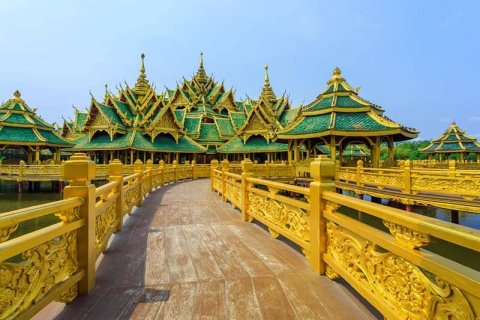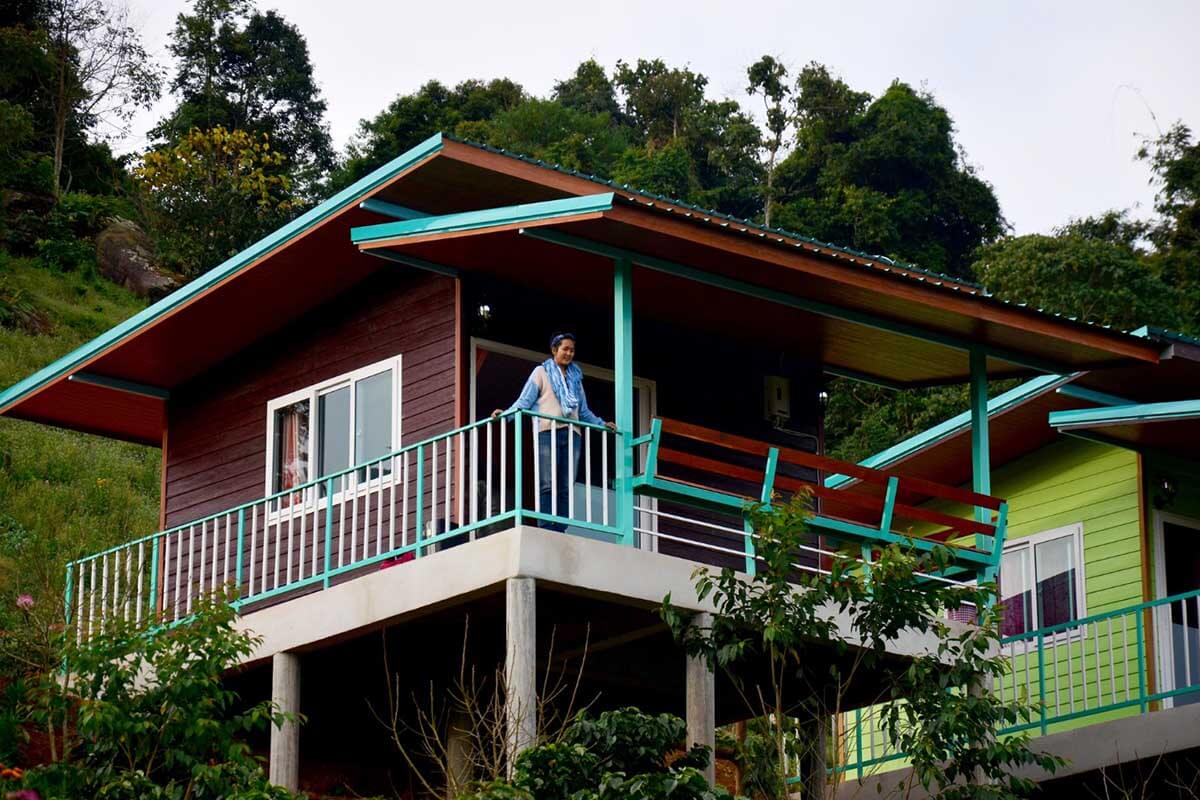
Thai temples are bright, vivid, and have many colors, small details, and gilding. But, traditional houses and contemporary residential buildings are minimalistic and have simple shapes.
The Thai architectural tradition is influenced by the hot tropical climate. Modern houses are constructed with centuries-old rules. Contemporary Thai houses are designed to be less hot. Also, it's very expensive to constantly turn on the air conditioner. The villas have large windows and doors to let the wind pass through the whole house, and awnings, blinds and blackout curtains save homeowners from the scorching sun. In Thai houses, there aren't attic windows on the roofs because sunlight will come through into the rooms, filling them with heat.
Also, traditionally, many houses are built on stilts. This was a practical solution to prevent the houses from flooding. Modern life deals with floods better; we have fewer disadvantages and don't get in as much difficulty as in the past. But during the rainy season, floods happen often. Piles are also a decorative element.
White attracts less heat so this color and other light shades are common in Thai architecture. In condominiums that are rented with interior decoration, apartments are also made in light colors. This helps to reflect sunlight and visually makes small apartments more spacious. In Thai homes, the floor is tiled. This material makes the house cooler and easier to clean.

Japanese minimalist style is popular in Thailand. Many developers attract Japanese designers to their projects. In Thailand, as in Japan, it's acceptable to sit on the floor. So, Japanese interiors fit into Thai everyday life. There are houses with mats on the floor instead of sofas and armchairs. There are also small low tables. Or there may not be a bed we are used to having in our houses, but there is a mattress on a raised platform on the floor.
The gardens around villas and condominiums are also minimalistic. They have modern sculptures, unusual benches, and flower beds. But the main thing is the pool, which is the most standout thing in garden art. In some villas, the swimming pool is larger in the garden than the lawn. The houses face towards the pool. The pool can also be alongside the house. Also, it can have huge panoramic windows and sliding doors in the walls to enjoy the view of the water. Panoramic windows can also create unity with nature if there are a lot of green spaces around the house. Swimming pools are often decorated with waterfalls, elephant sculptures or mythical animals. But plants and gardens decorate the space around the house. Trees and bushes are trimmed into beautiful shapes to symmetrically frame the pool. Homeowners should remember that taking care of the garden and pool isn't cheap and needs some effort. For condominiums, the yearly fee for a management company's services also covers maintaining the area.
The villas have pools with sea views. This is done for European or Chinese tenants or buyers, as they are afraid to swim in the sea and prefer to swim in pools. But at the same time, they want to enjoy the ocean view and sea breeze. In Thailand, sea ebbs and flows are very common. So, pools are necessary when the sea moves away but there's still a sense of the seashore.
The architecture of modern houses has a traditional Thai roof with upturned edges called a pagoda. This is also common in other Asian countries. Traditional outdoor gazebos called "sala" are also made in this style. They are built near swimming pools so you can enjoy the warmth while lying on a chaise longue and not getting burned in the sun. There is a fan under the roof for greater comfort.
As in other Eastern countries, rooms in houses are separated by screens and sliding doors. This makes the architecture of the house lighter and changes the space of the rooms. It makes them bigger or splits it up, if necessary.
The traditional element of Thai houses is a spirit house, a small altar in the form of a Thai temple or house. It can be found on the plot of a private house and in front of a condominium. This is an important part of the daily life of Thais – they are serious about traditional rituals. In private homes, there can be small altars.
.jpg)
Villas in the resort regions of the country for rent are decorated in a Thai style. They use traditional engravings of dancing girls, sculptures imitating elephant tusks (it's illegal to use a real elephant bone), images and sculptures of Buddha, and other Buddhist symbols like the Om sign or mandala. Also, some Thais consider it unacceptable to use Buddhist symbols and the image of the Buddha as a decoration.
Thai apartments rarely have baths, usually they only have showers. But, there is a bath in private houses. The bathroom usually has large windows to enjoy the view while bathing.
Open doors and windows have draperies or mosquito netting. The fabric lets the cool wind through but doesn't allow insects and lizards to get inside the room. Don't forget that mosquitoes in Thailand are carriers of serious diseases like dengue fever and malaria.
The architecture and decor of Thai houses, both villas and multi-story buildings, is well-thought-out and based on the traditions of the country. The main task of a house in a hot climate is to protect from the sun, heat, and insects, as well as to be a place of rest and recuperation. Thai houses do an excellent job of this. The interiors are also well-thought-out and give homeowners a relaxed feeling and coolness.


